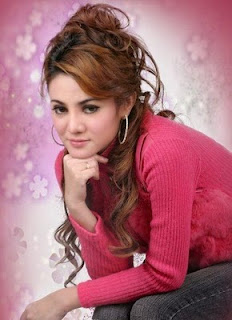Adding spice to the best video website in the world. Featuring HD videos of sexy women in lingerie, bikini or even less, as long as it is tasteful. Visit our new Sexiest Indonesian Celebrities.
Sexing Indonesian Girls and Celebrities
Hottest Indonesian Model
Indonesian Girls Models Beauty A collection of the best photography portfolio websites all in one place Gallery Pretty Lingerie Bikini Nice Pure Indonesian Models Of Photographers.
Most Beautiful Malaysian Actresses
Carmen Soo is very much loved by the Filipino audience though she is actually a Malaysian actress. She was introduced on Philippine TV last year.
History Of Surabaya
Surabaya (pronounced [surəˈbaja]) (formerly Soerabaia or Surabaja) is Indonesia's second-largest city with a population of over 2.7 million (5.6 million in the metropolitan area), and the capital of the province of East Java. It is located on the northern shore of eastern Java at the mouth of the Mas River and along the edge of the Madura Strait.
To Indonesians, it is known as "the city of heroes" due to the importance of the Battle of Surabaya in galvanizing Indonesian and international support for Indonesian independence during the Indonesian National Revolution.
Surabaya is locally believed to derive its name from the words sura or suro (shark) and baya or boyo (crocodile), two creatures which, in a local myth, fought each other in order to gain the title of "the strongest and most powerful animal" in the area according to a Jayabaya prophecy. This prophecy tells of a fight between a giant white shark and a giant white crocodile, which sometimes interpreted as a conflict between Mongol forces and Raden Wijaya's Majapahit forces. Now the two animals are used as the city's logo, the two facing each other while circling, as depicted in a statue appropriately located near the entrance to the city zoo. This folk etymology, though embraced enthusiastically by city leaders, is unverifiable.
Alternate derivations proliferate: from the Javanese sura ing baya, meaning "bravely facing danger"; or from the use of surya to refer to the sun. Some people consider this Jayabaya prophecy as a great war between Surabaya native people and invaders in 1945, while another story is about two heroes that fought each other in order to be the king of the city. The two heroes were Sura and Baya.
The earliest record of Surabaya was in a 1225 book written by Chau Ju-Kua, in which it was called Jung-ya-lu, the ancient name of Surabaya. Ma Huan documented the early fifteen-century visit of Zheng He's Treasure ship in his 1433 book Ying-yai Sheng-lan: "after traveling south for more than twenty li, the ship reached Sulumayi, whose foreign name is Surabaya. At the estuary, the outflowing water is fresh".
In the fifteenth and sixteenth centuries, Surabaya was a sultanate and a major political and military power in eastern Java. It entered a conflict with, and was later captured by, the more powerful Sultanate of Mataram in 1625 under Sultan Agung. It was one of Mataram's fiercest campaigns, in which they had to conquer Surabaya's allies, Sukadana and Madura and to lay siege to the city before capturing it. With this conquest, Mataram then controlled almost the whole of Java, with the exception of the Sultanate of Banten and the Dutch settlement of Batavia.
Handelstraat, Surabaya in 1930s, now Jembatan Merah area.
The expanding East Indies Companies took the city over from a weakened Mataram in November 1743. Surabaya became a major trading center under the Dutch colonial government, and hosted the largest naval base in the colony. In 1917, a revolt occurred among the soldiers and sailors of Surabaya, led by the Indies Social Democratic Association. The revolt was firmly crushed and the insurgents given harsh sentences.
Japan occupied the city in 1942 as part of the occupation of Indonesia, and it was bombed by the Allies in 1944. After that it was seized by Indonesian nationalists. However, the young nation was soon put into conflict with the British, who were caretakers of the Dutch colony after the surrender of the Japanese.
The Battle of Surabaya was one of the most important battles of the Indonesian revolution. It was started after British Brigadier Mallaby was killed on October 30, 1945 near Jembatan Merah (the "Red Bridge"), allegedly by a stray bullet. The Allies gave an ultimatum to the Indonesian freedom fighters inside the city to surrender, but this was refused. The ensuing battle, which took thousands of lives, took place on November 10, and is nowadays celebrated as Heroes' Day (Hari Pahlawan). The incident of the red-white flag (the Dutch national red-white-and-blue flag at the top of Yamato Hotel's tower that was torn into the Indonesian red-white flag) by Bung Tomo is also recorded as a heroic feat during the struggle of this city.
To Indonesians, it is known as "the city of heroes" due to the importance of the Battle of Surabaya in galvanizing Indonesian and international support for Indonesian independence during the Indonesian National Revolution.
Surabaya is locally believed to derive its name from the words sura or suro (shark) and baya or boyo (crocodile), two creatures which, in a local myth, fought each other in order to gain the title of "the strongest and most powerful animal" in the area according to a Jayabaya prophecy. This prophecy tells of a fight between a giant white shark and a giant white crocodile, which sometimes interpreted as a conflict between Mongol forces and Raden Wijaya's Majapahit forces. Now the two animals are used as the city's logo, the two facing each other while circling, as depicted in a statue appropriately located near the entrance to the city zoo. This folk etymology, though embraced enthusiastically by city leaders, is unverifiable.
Alternate derivations proliferate: from the Javanese sura ing baya, meaning "bravely facing danger"; or from the use of surya to refer to the sun. Some people consider this Jayabaya prophecy as a great war between Surabaya native people and invaders in 1945, while another story is about two heroes that fought each other in order to be the king of the city. The two heroes were Sura and Baya.
The earliest record of Surabaya was in a 1225 book written by Chau Ju-Kua, in which it was called Jung-ya-lu, the ancient name of Surabaya. Ma Huan documented the early fifteen-century visit of Zheng He's Treasure ship in his 1433 book Ying-yai Sheng-lan: "after traveling south for more than twenty li, the ship reached Sulumayi, whose foreign name is Surabaya. At the estuary, the outflowing water is fresh".
In the fifteenth and sixteenth centuries, Surabaya was a sultanate and a major political and military power in eastern Java. It entered a conflict with, and was later captured by, the more powerful Sultanate of Mataram in 1625 under Sultan Agung. It was one of Mataram's fiercest campaigns, in which they had to conquer Surabaya's allies, Sukadana and Madura and to lay siege to the city before capturing it. With this conquest, Mataram then controlled almost the whole of Java, with the exception of the Sultanate of Banten and the Dutch settlement of Batavia.
Handelstraat, Surabaya in 1930s, now Jembatan Merah area.
The expanding East Indies Companies took the city over from a weakened Mataram in November 1743. Surabaya became a major trading center under the Dutch colonial government, and hosted the largest naval base in the colony. In 1917, a revolt occurred among the soldiers and sailors of Surabaya, led by the Indies Social Democratic Association. The revolt was firmly crushed and the insurgents given harsh sentences.
Japan occupied the city in 1942 as part of the occupation of Indonesia, and it was bombed by the Allies in 1944. After that it was seized by Indonesian nationalists. However, the young nation was soon put into conflict with the British, who were caretakers of the Dutch colony after the surrender of the Japanese.
The Battle of Surabaya was one of the most important battles of the Indonesian revolution. It was started after British Brigadier Mallaby was killed on October 30, 1945 near Jembatan Merah (the "Red Bridge"), allegedly by a stray bullet. The Allies gave an ultimatum to the Indonesian freedom fighters inside the city to surrender, but this was refused. The ensuing battle, which took thousands of lives, took place on November 10, and is nowadays celebrated as Heroes' Day (Hari Pahlawan). The incident of the red-white flag (the Dutch national red-white-and-blue flag at the top of Yamato Hotel's tower that was torn into the Indonesian red-white flag) by Bung Tomo is also recorded as a heroic feat during the struggle of this city.
History Of Malang
Malang is the second largest city in East Java province, Indonesia. It has an ancient history dating back to the Mataram Kingdom. The city population at the 2010 Census was 819,708. During the period of Dutch colonization, it was a popular destination for European residents. The city is famous for its cool air and the surrounding country regions of Tumpang, Batu, Singosari, and Turen. People in East Java sometimes call it "Paris of East Java." Malang was spared many of the effects of the Asian financial crisis, and since that time it has been marked by steady economic and population growth.
The etymology of the name Malang is uncertain. One of the theory said that the name Malang is derived from the words Malangkucecwara which means "God has destroyed the false and enforced the right". The words was taken from an ancient stele which mention a legendary temple called Malangkucecwara supposedly located near the city Malang. The word Malangkucecwara was applied as the motto of the city of Malang.
The history of Malang Regency could be revealed through the Dinoyo inscription 760 AD as the primary official document to support the birth of Malang before a new inscription was discovered in 1986, which is so far not yet revealed. According to the inscription, it was concluded that the 8th century was the beginning of the existence of Malang Regency's government due to the birth of King Gajayana's ruling of his kingdom in Malang. From the Dinoyo inscriptions, it is noted that the inscription used the "Candra Sengkala" or "Cronogram" Calendar, and stated that the birth date of Malang Regency was on Jum'at Legi (sweet Friday) of 28 November 760 AD.
The city was incorporated into Mataram Sultanate in 1614, then transferred to Dutch colonial rule. Malang was modernized under the Dutch; its cool climate which results from its elevation, along with its proximity to the major port of Surabaya, made it a popular destination for the Dutch and other Europeans. In 1879, Malang was connected to Java's railroad network, further increasing development and leading to increased industrialization.
Along with growth came urbanization. The government could not satisfy the population’s needs for affordable housing, which lead to the building of shanty towns along the rivers and rail tracks. Up until today, the shanty towns still exist; although some have been transformed into “better” housing.
The etymology of the name Malang is uncertain. One of the theory said that the name Malang is derived from the words Malangkucecwara which means "God has destroyed the false and enforced the right". The words was taken from an ancient stele which mention a legendary temple called Malangkucecwara supposedly located near the city Malang. The word Malangkucecwara was applied as the motto of the city of Malang.
The history of Malang Regency could be revealed through the Dinoyo inscription 760 AD as the primary official document to support the birth of Malang before a new inscription was discovered in 1986, which is so far not yet revealed. According to the inscription, it was concluded that the 8th century was the beginning of the existence of Malang Regency's government due to the birth of King Gajayana's ruling of his kingdom in Malang. From the Dinoyo inscriptions, it is noted that the inscription used the "Candra Sengkala" or "Cronogram" Calendar, and stated that the birth date of Malang Regency was on Jum'at Legi (sweet Friday) of 28 November 760 AD.
The city was incorporated into Mataram Sultanate in 1614, then transferred to Dutch colonial rule. Malang was modernized under the Dutch; its cool climate which results from its elevation, along with its proximity to the major port of Surabaya, made it a popular destination for the Dutch and other Europeans. In 1879, Malang was connected to Java's railroad network, further increasing development and leading to increased industrialization.
Along with growth came urbanization. The government could not satisfy the population’s needs for affordable housing, which lead to the building of shanty towns along the rivers and rail tracks. Up until today, the shanty towns still exist; although some have been transformed into “better” housing.
Top Model Photo Style of Zahra Jasmine
Although still quite young but Zahra did not look awkward when the lens is the photographer we were ready took aim. She was very free-style and super sexy posing in lingerie she was wearing. "I first entered the modeling world's first high school class time, so if counted anyway already quite long too, hehe," she said. No wonder this time it was used and seemed to enjoy the photo session. Women who had been a representative for the Miss Indonesia West Java is not a romantic. Seen when he answered our questions about the treatment she has ever received romantic, Zahra was thinking.
Subscribe to:
Posts (Atom)














































































